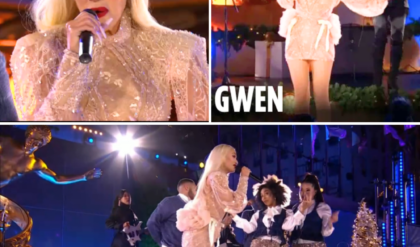Warner Bros. Discovery and Disney Entertainment have announced a Disney+, Hulu, and Max bundle. The cable jokes aren’t so funny anymore
“They’re just gonna accidentally create cable again.”
That’s been a frequent joke about the streaming landscape in media circles of late. You see it pop up in Slack windows and tweets every time one entertainment conglomerate gobbles up another and consolidates their respective video on demand apps. CBS All Access and Showtime synthesize into Paramount+. HBO becomes HBO Max and then becomes Max. Hulu and Disney+ are suddenly one and the same. The joke works every time because it’s not a joke—it’s a prophecy. The “cablefication” of streaming was always going to happen. And now it has.
This week, Warner Bros. Discovery and Disney Entertainment announced that they will be launching a bundled option of the companies’ three biggest streaming services: Disney+, Hulu, and Max. There will now be a subscription plan that consolidates content from multiple corporate interests and projects them into your living room with (optional) ads. So, you know: cable.
The press release reads, in part: “Beginning this Summer in the U.S, the streaming services will be offered together, providing subscribers with the best value in entertainment and an unprecedented selection of content from the biggest and most beloved brands in entertainment including ABC, CNN, DC, Discovery, Disney, Food Network, FX, HBO, HGTV, Hulu, Marvel, Pixar, Searchlight, Warner Bros., and many more. The new bundle will be available for purchase on any of the three streaming platform’s websites offered as both an ad-supported and ad-free plan”.
Naturally, Warner Bros. and Disney have pitched this as a win for consumers and shareholders alike. In reality, it’s a surrender—a tacit acknowledgement that all attempts to disrupt the entertainment industry damn near broke it instead.
Ever since Netflix pioneered the VOD streaming subscription game, everyone else has been eager to get in on the action. Yes, the traditional media models of network television, cable television, pay cable, theatrical releases, and physical media were working just fine in concert with Netflix’s streaming accompaniment but in the corporate world “doing just fine” only means “not growing fast enough.” Despite the fact that Netflix rarely posted eye-popping profits come earnings season, the entertainment gatekeepers came to believe that the growth potential provided by the internet was infinite.
Some two decades later, precisely no one has made real money in the streaming space. Netflix’s winnings have been limited due to the sheer amount of pricey programming it has greenlit. Amazon, NBCUniversal, and Paramount have all yet to enjoy a profit from their premier streaming services (though Paramount projects one for Paramount+ in 2025). Disney and Warner Bros. actually have posted profits for their streamers but Disney’s came along with a steep ESPN+ loss and Max’s profits came only due to a price increase amid a shedding of 700,000 subscribers. As these companies have found out, while the internet might be theoretically limitless, the attention span and pocketbooks of the consumers expected to watch all this stuff isn’t.
Fixating on the boundless potential of what a business could be rather than enjoying the bountiful reality of what it actually is has long been a feature of the corporate economy, but the mindset has grown more acute as the magical thinking of Silicon Valley spreads to boardrooms across the country. The effects of this misplaced ambition haven’t been painful solely for executives on earnings conference calls, they’ve also been downright ruinous to the health of the entertainment industry overall.
Perhaps you’ll recall a recent bit of Hollywood news when both the Writers Guild of America (WGA) and the Screen Actors Guild (SAG-AFTRA) went on strike to receive an equitable contract from the studios, streamers, and companies represented by the Alliance of Motion Picture and Television Producers (AMPTP). Like all work stoppages, there were many disparate reasons for these strikes. But at their core, they both came down to the same thing: the math just didn’t add up anymore.
While the major players in both creative professions have always been and always will be taken care of, the sizable “middle class” of actors and writers could only watch as their compensation and benefits began to dwindle. That shrinking began, not coincidentally, with the dawn of the streaming era. Before streaming, TV writers could rely on institutions like writers’ rooms that created more jobs and lengthy episode orders that provided career stability. Similarly, the pre-streaming world provided benefits to actors like theatrical releases that generated reliable success metrics to use in contract negotiations, rather than the locked box of proprietary data that streamers hold close
To the WGA, SAG-AFTRA, and AMPTP’s credit, the new collective bargaining agreements signed in 2023 alleviate many of these issues. But the corporate world’s insistence on following a streaming pipe dream hurt a lot of people for a very long time. And in the end it was up to the labor force to save the industry that employs them, simply by demanding a return to something resembling the status quo.
A return to that status quo will likely be beneficial to viewers as well. The streaming era has blended the concepts of “film” and “television” into a gray content sludge. Anecdotally, many of the young people I’ve met don’t know whether to categorize a given streaming property as a “movie” or a “TV show.” In a streaming context, each medium often takes on the unfavorable aspects of the other. Movies feel smaller and TV series abandon episodic storytelling. It’s telling that basic cable’s competent but unremarkable legal drama Suits became a streaming phenomenon last summer.
With all that context in mind, certain passages of Warner Bros. and Disney’s cable recreation announcement are particularly infuriating. The statement is peppered with text like “first of its kind offering,” “ad-supported plan,” and “a powerful new roadmap for the future of the industry.” All of these, of course, describe entertainment media before streaming.
We all knew that the arrival of cable-style bundles was the only way this very silly era could end. The tragic part is that it took so long for the powers-that-be to realize that. And in their haste to fix something that wasn’t broken in the first place, they caused irrevocable damage.





